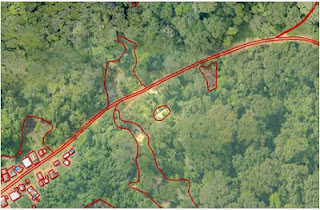Abstract: This project was executed by
SBL for a mining company having operations in Africa. The study area
covered approximately 32 sq.km of land falling in the south western part
of Congo.This project was awarded to SBL based on the excellent quality
and timeliness shown during an earlier project for Landuse and
Landcover mapping. The client requirement was for the creation of hight
accuracy DTM edited to 0.2m, DSM of 0.2m and orthophotos of 10cm GSD
using UAV imagery
Client: Client is a mining company based in the UK and having mining operations in various parts of African continent
Geography: ~32 sq.km of land falling in the south western part of Congo
Industry: Mining .
Challenges:
• GCP distribution was not even and so getting a good quality stereo model became difficult. So SBL’s experts suggested suitable areas for collecting additional GCP’s which proved to be very useful in the end.
• Fixing the terrain height and water body was a challenge as the area is a dense forest with large swathes of swampy land.
• Data being of 0.2m handling and viewing it was difficult.
• Editing 0.2m DTM was a very big challenge.
Approach: SBL used state of the art UAV softwares in carrying out the Aerial Triangulation of the UAV images. After Point cloud densification and DSM creation Undistorted images were generated by the UAV software after the creation of DSM data. The Aerial Triangulation reports were imported into Inpho Match AT and stereo models were created in it. After this DTM were generated and edited using Inpho DT Master software. SBL’s highly experienced professionals produced high accuracy DTM by the correct usage of soft and hard breaklines . All manmade structures and vegetated areas were interpolated to terrain height after plotting breaklines which were fixed to terrain heights. The edited DTM points were exported in XYZ format and edge matched with adjacent DTM tiles and dispatched to the client.
Benefits: The client benefited by this work in
• Getting high accuracy DTM’s of 0.2m by the use of cutting edge UAV softwares.
• Very quick turnaround time.
• Use of photogrammetry software along with UAV software helped in getting a good DTM output.








